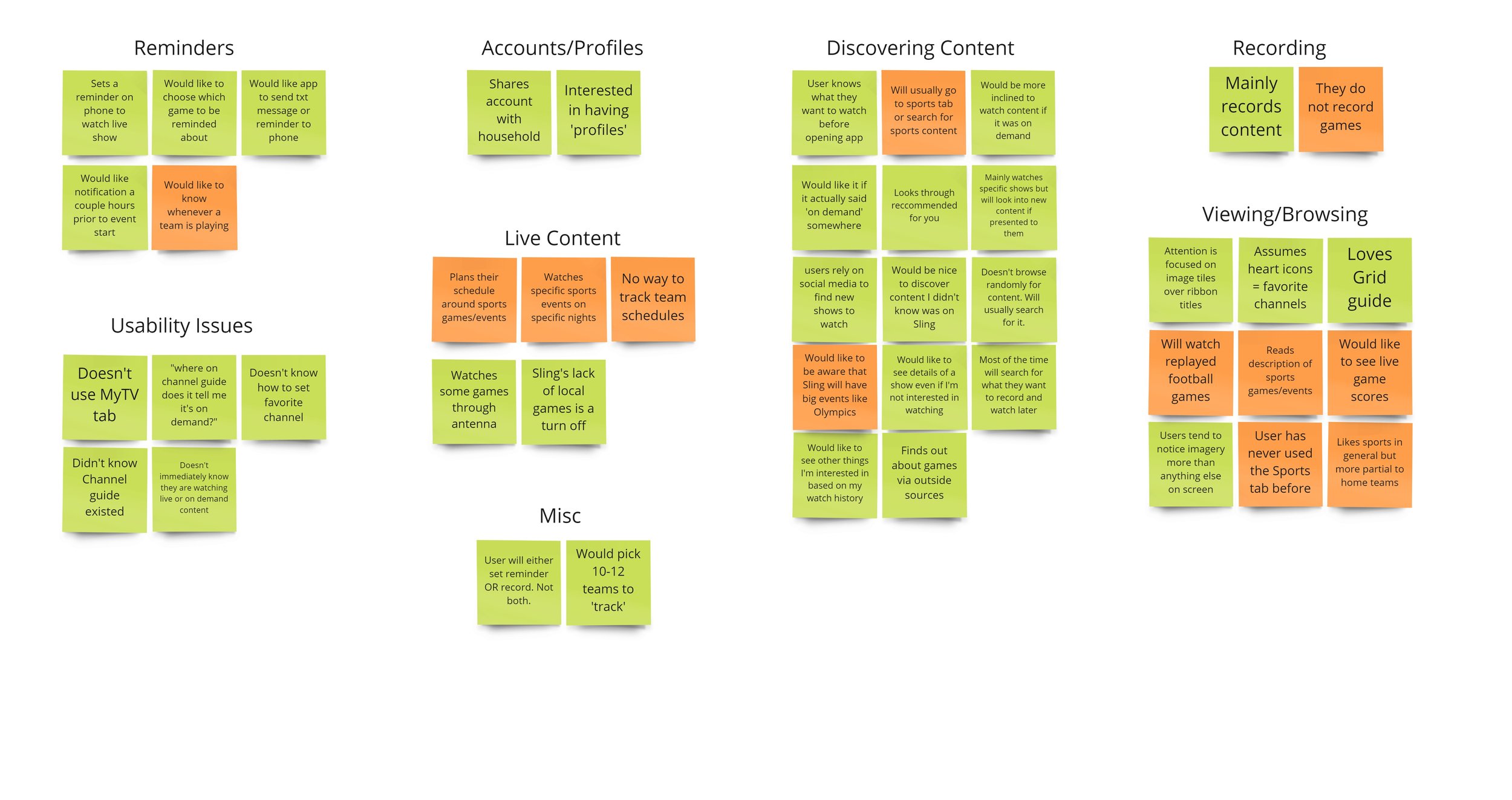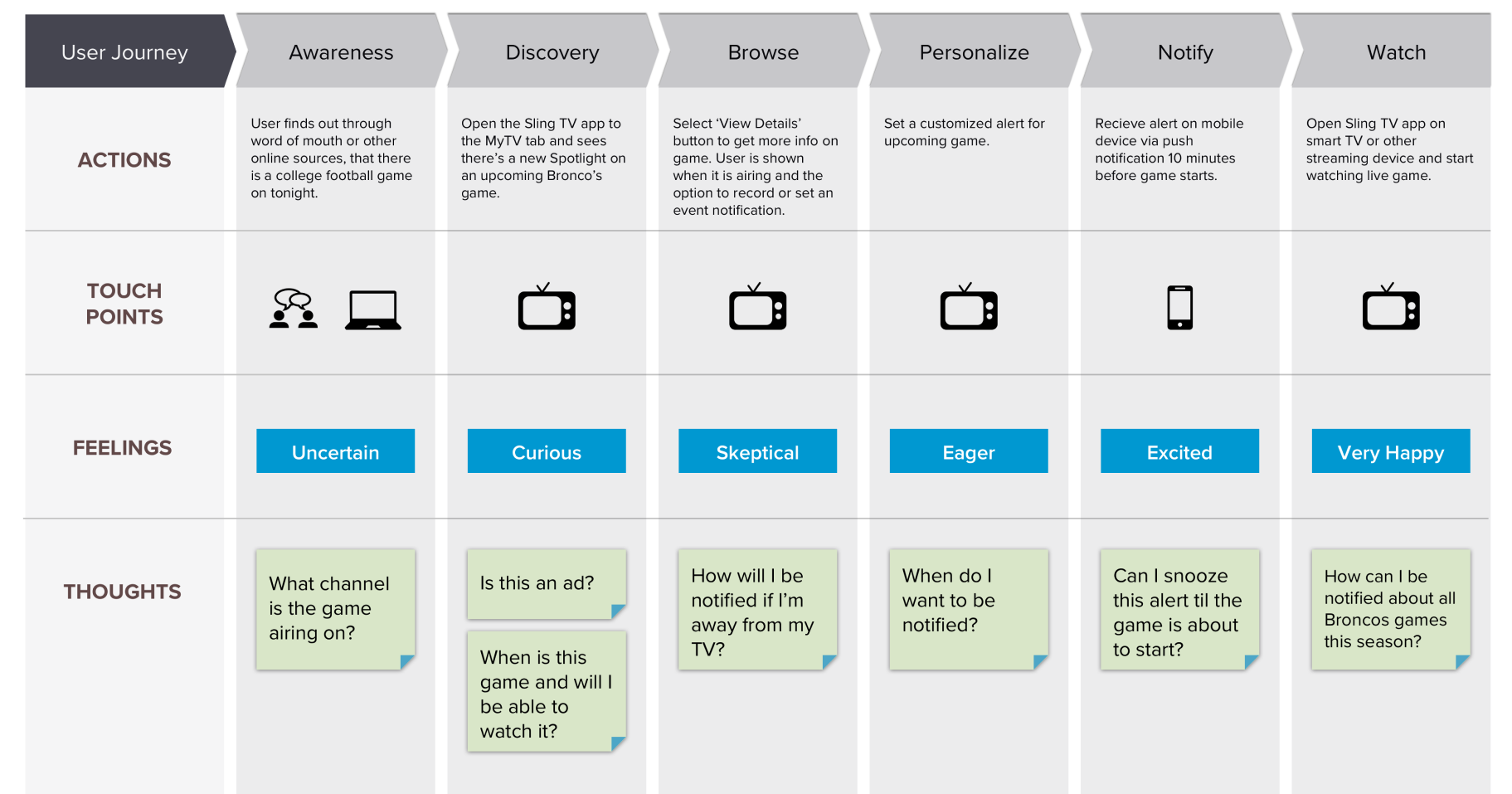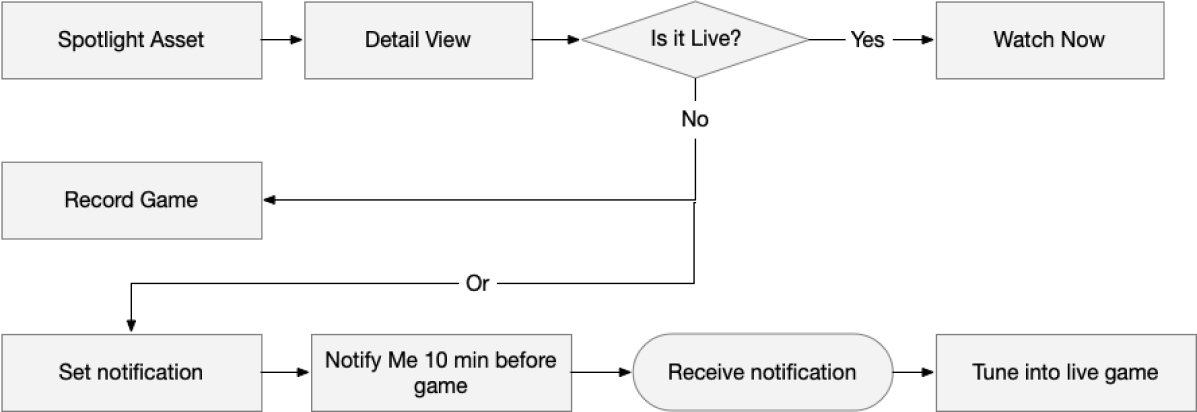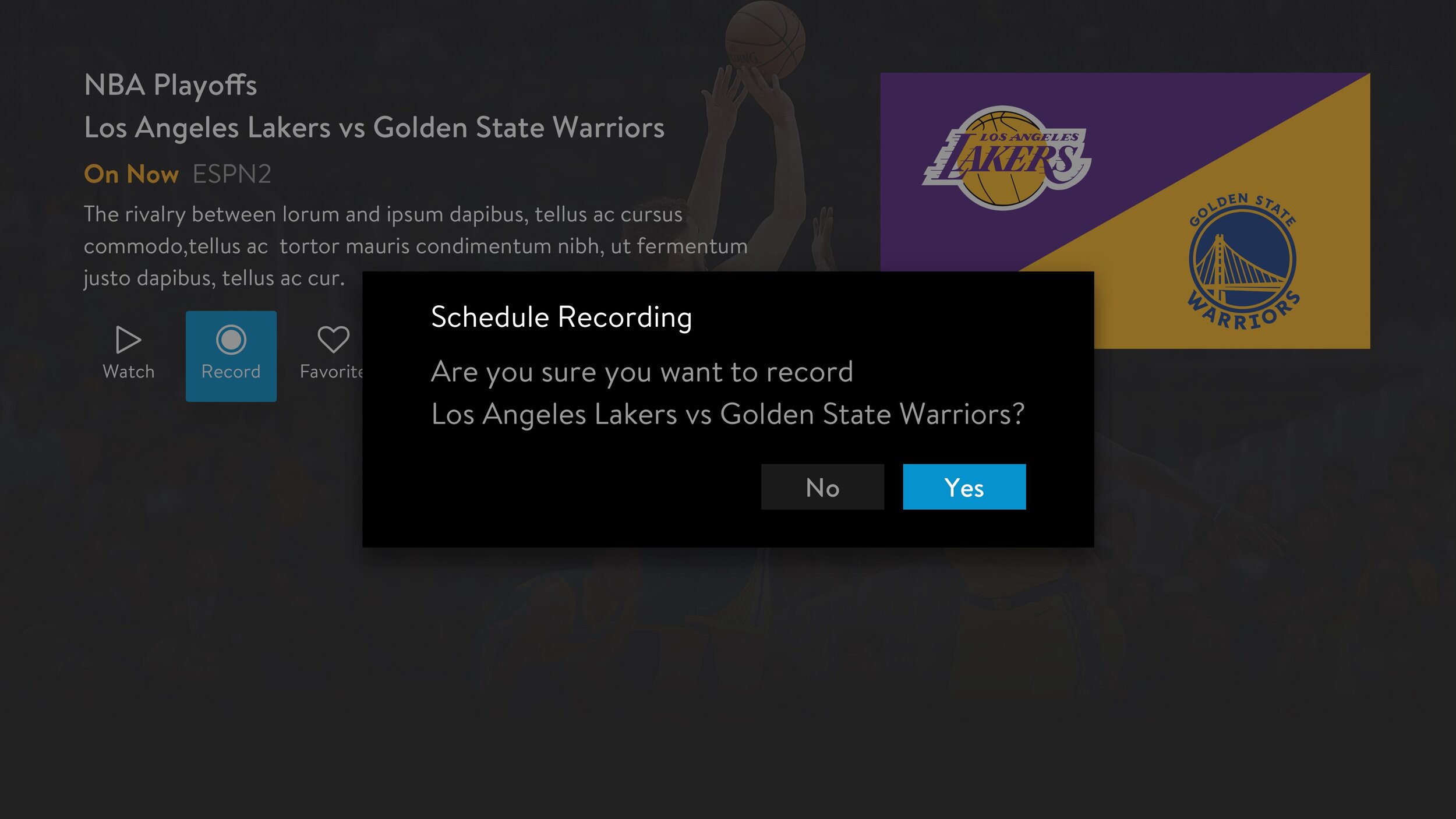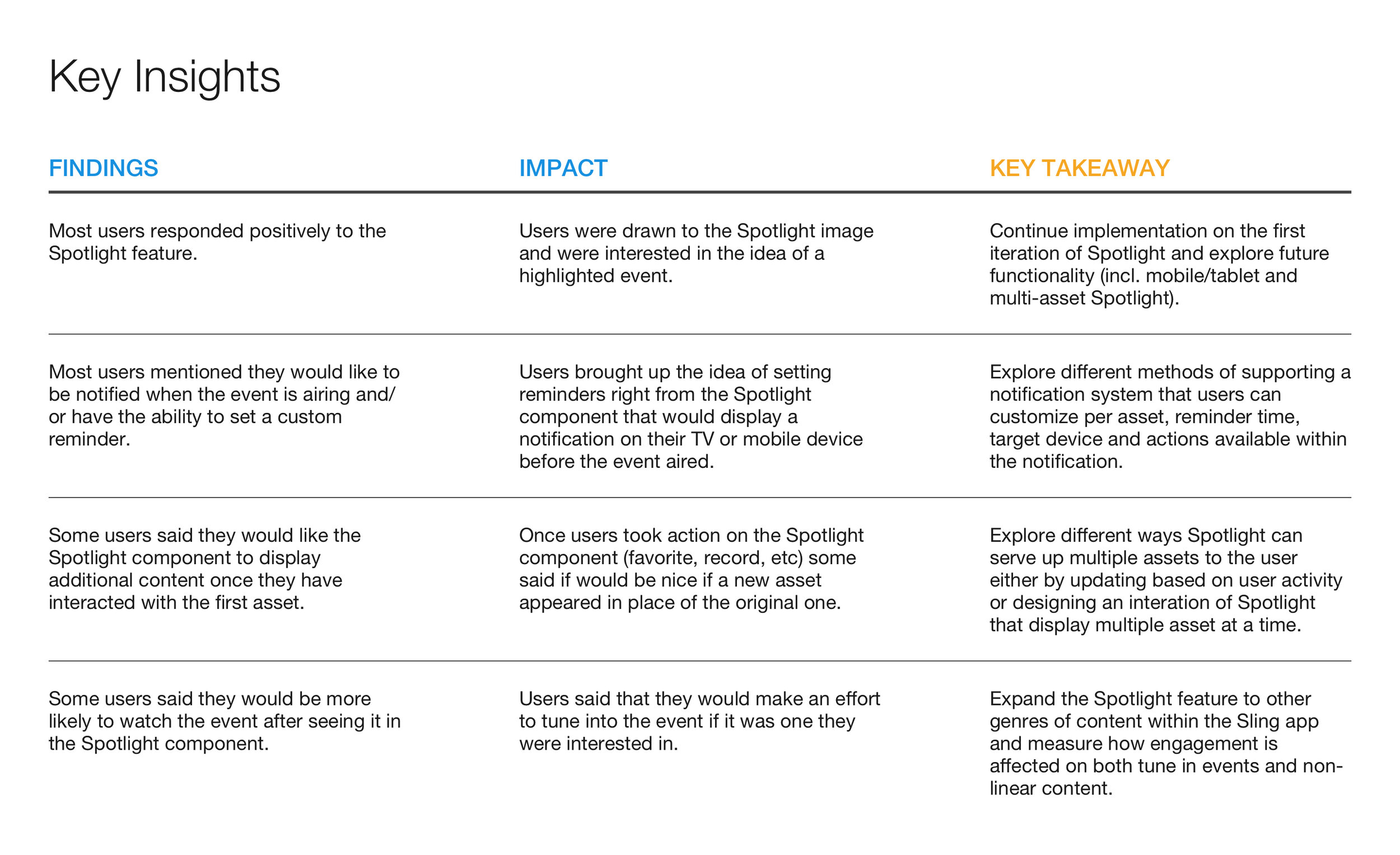Sling TV
Overview
Sling TV is the first app-based streaming service for live and on-demand content to a wide variety of TV, mobile and tablet devices. Sports events, including live games, is one of the most popular types of live content that is watch on Sling.
Role
Research, Information Architect, UX/UI Design, Prototyping
Tools
Sketch, Adobe XD, Invision, Marvel
Problem
Based on data from our customer lifecycle team, during the 2018 football season (Aug 1st 2018 - Jan 31st 2019), 25% of cancellations were cited as “missing channels or shows/games that I want”. About a quarter of those reasons cited channels that Sling actually already carried. This indicated that customers were having trouble finding relevant content within the Sling app.
Design Process
Research
Objectives
Identify challenges users face when trying to find the games they want to watch and sports content that is relevant to them
Make it easier for users to find relevant content and thus decrease their time-to-video.
Make customers aware of future games and lead them back to watch on Sling
Usability Tests
The first step in our research was to gather as much feedback on the current app as possible. We wanted feedback from both existing and past customers. We conducted in-person interviews and had each user go through the current app on a Roku streaming device that was connected to a 55 inch TV. The purpose of this study was to evaluate how users interacted with the Sling app to discover and watch live and upcoming content. Our intention was to keep the tasks and questions we presented purposely open-ended so the feedback was as unbiased as possible. The data we collected helped us understand the user’s behaviors within the current experience as well as gain insights on what parts of the app users struggled with and needed improvement. That said, because of the nature of my cross functional team, we analyzed the data in a way that helped us form problems statements around the goals that aligned with our specific business needs.
Analysis
Affinity Mapping
I organized all the feedback I had gathered during the user tests into an affinity map and grouped them based on similarities. The orange stickies indicate a direct relation to our business needs which was around sports content.
Job Stories
Design
User Flow
Based on the job stories I created from our findings we began to construct user experience flows for the following scenario.
Wireframes
Spotlight
Notifications
Deliverables
Outcome
Spotlight
The team and I were able to conduct a round of testing for the Spotlight feature with a prototype created in Marvel and projected onto a 10 foot device in our downtown office. We received positive feedback form the users who interacted with the feature and mentioned a desire for future notifications.
Notifications
At the time of our testing for notifications we were unable to conduct in person testing like we had planned. The rise of COVID-19 in March 2020 put our research efforts on hold as the team and I figured out ways to continue in a remote setting.
Future State
As our focus for the future of Sling shifted to an overhaul of the app design we kept our research and findings in mind as we improved the overall experience. Spotlight lived on in the new redesign and contains even more dynamic interactions than what we tested back in 2020. Notifications were still a ways out but the positive feedback and data we collected was sure to come back into focus as the product team set their sights on new and improved features for their customers.




